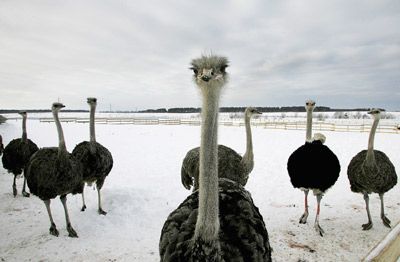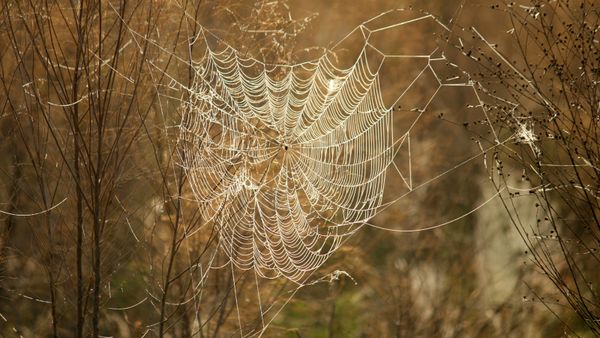When frightened, ostriches instinctively bury their heads in the sand in the hopes that trouble will pass them by -- or so the legend goes. In reality, ostriches don't bury their heads in the sand to avoid danger. Not only would they be unable to breathe, but when you think about it, they really have no reason to do so.
Ostriches are the fastest animals on two legs, capable of running as fast as 40 miles per hour for a brief period if they have to outrun trouble. Endurance isn't an issue either for these birds – they can sprint at a brisk 30 miles per hour for a full 10 miles straight if needed [source: Stewart].
Advertisement
If this impressive speed isn't enough, ostriches have plenty of other defenses. They stand around 9 feet tall and weigh in at a whopping 350 pounds. If threatened, they can deliver a kick powerful enough to kill a lion [source: San Diego Zoo].
Clearly, ostriches have plenty of natural defenses and little reason to hide. So where did the myth that they bury their heads in the sand originate? Call it good parenting.
When it's time to start a family, the ostrich digs a massive hole measuring between 6 and 8 feet wide and 2 to 3 feet deep. They bury the eggs safely in the ground, then mom and dad take turns sitting on the eggs to protect them until they're ready to hatch. A few times a day, the ostrich parents dip their heads below the ground to gently turn the eggs using their beaks [source: American Ostrich Association]. This relatively brief head-duck -- which lasts only as long as it takes the ostrich to inspect and arrange the eggs to its satisfaction -- may have given rise to the head-burying myth.
The legend could also be attributed to the fact that a nesting ostrich who senses danger may flop down with his head and neck flat against the ground in hopes that potential predators won't spot him. In this position, he can potentially blend into the terrain, though his head never actually goes underground [source: San Diego Zoo].
Of course, even flopping to the ground and hoping trouble passes by isn't the bird's first instinct; he only takes this path if he can't outrun the trouble or fight it off. When he has eggs to protect, instinct tells the ostrich to run, spurring predators to pursue him [source: American Ostrich Association]. Thanks to their superior speed, ostriches are likely to easily outrun any animals that dares to chase them, leaving their eggs and themselves free from harm.
Advertisement



